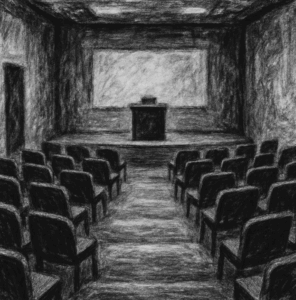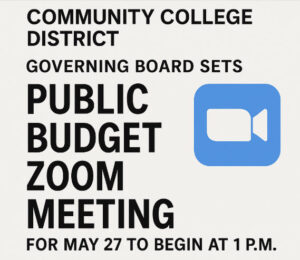The Blog does not post to YouTube, X (formerly Twitter), or any other external platform, and it has not authorized anyone to use its name, content, or images without express written consent.


 Catherine “Cathy” Kefer was named Yavapai Community College’s Teacher of the Year at this year’s nursing pinning ceremony. She was recognized as a 2025 GIFT (Great Ideas For Teaching) Fellowship winner. A Gift Fellowship winner is Yavapai’s equivalent of teacher of the year award.
Catherine “Cathy” Kefer was named Yavapai Community College’s Teacher of the Year at this year’s nursing pinning ceremony. She was recognized as a 2025 GIFT (Great Ideas For Teaching) Fellowship winner. A Gift Fellowship winner is Yavapai’s equivalent of teacher of the year award.
A nurse with 46 years of experience, Ms. Kefer came out of semi-retirement two years ago while temporarily filling in for physicians at a Prescott oncology clinic. During that time, she applied for and was appointed as an adjunct nursing faculty member at Yavapai Community College.
Despite her relatively short tenure, Ms. Kefer no doubt made a clear and lasting impact on the strength and spirit of Yavapai’s nursing program. The “tough love” approach she brought to her teaching will be missed. Reflecting on the GIFT award, she remarked, “They really did get it. They really did kind of appreciate the tough love mentality they always complained about. It makes me happy that they appreciated it.”
The Community College press release dated June 5, 2025, described the intensity of Kefer’s return to teaching two years ago: long days in the classroom, crisscrossing Northern Arizona to support students at clinical locations, and late-night and weekend correspondence with anxious students. “I’m not one to ignore it—a text or a phone call from a student. I can’t do that,” Kefer said. “So you’re working seven days a week.” The commitment left her with limited time with family and her favorite pastimes, such as cooking and gardening.”
“I’m ready for more free time with my husband, my kids, and grandkids. It’s time to step back a little bit,” she added. “I’d like to sleep in until maybe 6 a.m.”
You may read more about Ms. Kefer in the Community College press release at https://www.yc.edu/v6/news/2025/06/kefer.html.

Robert E. Oliphant
Opinion: It was deeply troubling—if not outright alarming—to witness how Yavapai Community College District 1 Governing Board Representative William Kiel was treated during the May 27 public budget hearing. Rather than an open exchange about questions involving $120 million in the mostly taxpayer funded budget the Board was being asked to approve, the meeting resembled something like a scripted stage production—where the Chair appeared determined to silence meaningful inquiry and bend the process to her will.
From the outset of the meeting, Chair Deb McCasland unilaterally imposed a five-minute time limit on Board members wishing to raise questions and discuss the budget. This arbitrary cap was never discussed or approved by the full Board—yet Ms. McCasland was determined to enforce the limit with the vigilance of a sentry guarding the walls against unwelcome scrutiny.”
Mr. Kiel, rightly concerned about the limitation, voiced his objection and asked for more time. McCasland offered a vague concession: perhaps there would be a second round of questions “if time allowed.” Unsurprisingly, she later declared there was no need for a second round, thereby eliminating any further opportunity for scrutiny of the budget.

Mr. Kiel at meeting showing time left to speak on stopwatch.
As Kiel pressed forward during his allotted minutes—armed with a stopwatch, no less—McCasland repeatedly interrupted him, declaring his time had expired. Kiel protested, and the Governing Board’s attorney intervened in his defense, affirming that time remained. Even then, McCasland continued to cut him off, only to be overruled by the attorney once again.
This was no mere misunderstanding. It resembled a calculated effort to muzzle a Board member charged with asking hard questions on behalf of the public. The imagery was striking: one lone voice attempting to speak truth in a room determined to turn down the volume.
Equally disconcerting was Mr. Kiel’s assertion that he had reached out prior to the meeting to the College’s Vice President of Finance and Administration for help with budget questions, only to be ignored. When this was raised, College President Dr. Lisa Rhine interjected, denying receipt of such a request. However, Kiel clarified that the request had been sent to the Board Chair. McCasland vaguely acknowledged the request was made at a previous meeting but offered no explanation as to why it was not acted upon. The tone, in my judgment, from both the Chair and the President, in that moment, could only be described as dismissive—if not somewhat overtly hostile.
That a duly elected Board member would be treated in such a fashion—during a public meeting about how to spend $120 million in public funds—should alarm every citizen of Yavapai County. What we witnessed was not transparency. It was a power play—an attempt to micromanage discourse and limit oversight. For some, it bordered on a suppression of free speech. For others, it was simply a disgrace.
In either case, it was a poor performance from those entrusted to lead. Public institutions are not private kingdoms. When dialogue is silenced and accountability sidestepped, it’s not just one Board member who suffers. It’s the public trust that takes the blow.
It is worth noting that during the Board’s regular business meeting, which immediately followed approval of the budget, Representative Kiel requested that the draft minutes of a prior meeting explicitly reflect that Board members were limited to “two minutes” to ask questions. Although the statement was factually accurate, his motion was defeated in a 3-2 vote. The majority contended that the meeting’s video recording sufficiently demonstrated the time constraint, rendering the amendment unnecessary. Mr. Kiel remarked that every motion he has made has been consistently rejected by the same three Board members. (See video clip.)
You may view clips of Mr. Kiel struggling with the time issue at the May 27 meetings below:
Yavapai Community College continues to be one of the best values in Arizona’s higher education landscape. By maintaining some of the lowest tuition rates in the state, the College ensures that many residents can access affordable, high-quality education. This commitment makes college attainable for many individuals, and empowers them with the tools and opportunities needed to transform their lives, support their families, and contribute meaningfully to their communities.
In a press release dated May 27, 2025, the Community College listed what it considered several of its highlights. They included the following claims:
You may read the complete press release at https://www.yc.edu/v6/news/2025/05/tax.html.
 Opinion: The Yavapai Community College District Governing Board held its Budget Public Hearing on May 27, 2025, via Zoom—with one glaring exception. Any resident wishing to raise a question or praise the budget was required to drive to the Rock House on the Prescott Campus, as Zoom participation was strictly off-limits for public comments.
Opinion: The Yavapai Community College District Governing Board held its Budget Public Hearing on May 27, 2025, via Zoom—with one glaring exception. Any resident wishing to raise a question or praise the budget was required to drive to the Rock House on the Prescott Campus, as Zoom participation was strictly off-limits for public comments.
No residents showed up in person to comment.
The decision to not allow the public to comment via zoom was apparently made by the Board Chair, Deb McCasland well ahead of the meeting. It was made without a Board vote on the process. Seen from the outside, the process gives the impression of outright contempt for the County’s residents.
Board members, or the Chair Deb McCasland, must be blind to the fact Yavapai County covers 8,125 square miles and compares in size with Connecticut, Delaware, Rhode Island and New Jersey. It is about the size of the nation of Israel and larger than El Salvador. It is only slightly smaller than Maricopa, County, Arizona. Maricopa covers 9,224 square miles and is the fourth largest county in the United States.
The County is divided by the Black Hills mountain range that runs west and east with Mingus mountain creating a natural physical barrier between the two sides of the County. There are few roads connecting the concentrated population centers in the west region of the County with the more rural areas in the east. For many, the most direct route in the east region to the west region is a single-lane alternate highway 89-A. It somewhat perilously crawls over Mingus Mountain at 7,815 feet.
Is the Governing Board blind to the struggles of the very people it’s supposed to represent? Yavapai County is home to one of Arizona’s largest elderly populations, alongside many disabled individuals and working residents who can’t take time off to travel to Prescott for a three-minute comment. Zoom participation isn’t just practical—it’s common sense!
The requirement for in-person attendance at the Rock House on the Prescott campus when Zoom is available to comment on the $120 million budget effectively barred residents from participation, if anyone was interested. This restrictive approach—whether a calculated maneuver or an act of negligence—all but assured that the public would not be heard at the so-called “Budget Public Hearing.”

Commentary by Robert E. Oliphant
Opinion: With a simple flick of the wrist, Yavapai Community College executives have repeatedly snuffed out promising Sedona and Verde Valley programs—programs that were once heralded as transformative—only to redirect resources and opportunities to Prescott. The result? Millions poured into Prescott’s coffers while Sedona and the Verde Valley watched their dreams of robust local education wither.
In 2000, hope surged across Sedona and the Verde Valley as citizens approved a $69.5 million bond for Yavapai Community College, envisioning that a tiny part of those millions would be spent on creating a Regional Career and Technology Education Center (CTEC) on the Verde Campus in Clarkdale. A federal grant of over $1 million further fueled excitement. College officials promised transformative workforce development:
“[The CTEC] will provide much-needed educational space and resources to further develop job training programs… This is an exciting and unique opportunity for northern Arizona residents to gain work-related skills that will allow citizens to seek immediate employment or increase their level of income.”
But while the Center promised to upskill workers for both existing and emerging industries, it needed care and cultivation—neither of which came from the Prescott-centric leadership.
Just as the fledgling center was attempting to take root, Yavapai College abruptly undercut the effort. This occurred in April 2007, when College leadership authorized purchasing a massive 108,000-square-foot building in Prescott for its Career and Technical Education campus (CTEC). The Verde Valley center was then shuttered before it could mature, while the future of technical education was diverted over Mingus Mountain. The excuse for abandoning the Verde Valley? Alleged low Verde Valley student interest—a claim all too familiar to this region.
This instance signals the start of an ongoing pattern of aggressive and opportunistic decision-making that has defined Prescott Community College leadership ever since.
Next on the chopping block: the nationally renowned Zaki Gordon Film Institute, opened in 2000 in Sedona in partnership with Yavapai Community College. Demand was immediate and overwhelming—500 students clamored to enroll in a program designed for 100. Plans were made to acquire up to 80 acres from the Coconino National Forest to accommodate the surge.
Keith Harwood, a Yavapai official, acknowledged the crisis:
“We’re bursting at the seams… We expected 100 students, and we have 500.”
Yet, the expansion never materialized. While the Film Institute thrived, gaining international recognition, its success was short-lived. A public dispute between Yavapai College leadership and the Institute’s founder, Dan Gordon, over management and curriculum changes led to the Institute’s 2011 exit for Liberty University in Virginia. Prescott based Yavapai Community College leaders claimed the program would continue—promising enhancements and expansions—but failed to deliver.
By 2013, neglect and broken promises resulted in the near-total collapse of film education at the College’s Sedona Center. Then, in a stunning move, the College unveiled a $103 million, decade-long capital plan allocating over 95% of funds for Prescott projects. The Sedona Center was to be shuttered and was getting readied for sale, with a vague promise of leasing other facilities for limited community programs.
Public outrage across Sedona and the Verde Valley forced the Board and administration to back down. Yet, by 2015, the Sedona Center had dwindled to a shadow of its former self, offering only a handful of courses. It was then closed by Prescott leadership while talks with the community about its future were held.
The last traces of the Film Institute now find themselves woven into the expanding film program on the Prescott campus. Sound familiar?
Under mounting community pressure, the College repurposed the Sedona Center from a film school into a culinary institute. It opened in 2017 after extensive renovations costing from $3 to $5 million, promising a fresh start. Initial enrollment was strong. However, the program suffered from the same fatal flaws as its predecessors: minimal marketing, no investment in housing for students, and little support for development from Prescott leadership.
Predictably, the culinary program followed the path of the CTEC and Film Institute—starved of resources and attention, destined to falter. In April 2025, the College made the closely guarded decision to close the Culinary Institute, a move that appeared calculated to avoid the intense public criticism it encountered during the Film School’s closure. In the fall 2025 students are to enroll in the newly constructed culinary training facility built on the Prescott Campus. Sound familiar?
Lessons for the Verde Valley
The pattern is unmistakable. Yavapai Community College’s leaders excel at promising big, nurturing programs just enough to attract attention and funding, and then—with a quiet “poof”—cutting them off at the knees while building almost identical facilities and funneling additional resources to Prescott. Sedona and the Verde Valley are left to pick up the pieces.
Residents deserve more than hollow promises and token gestures. They deserve a real commitment from Yavapai Community College’s leadership to build and sustain educational opportunities that genuinely serve and empower their communities. But after half a century of neglect, it’s clear that Prescott’s leaders don’t see Sedona and the Verde Valley as partners in education—they see them as cash cows. The only reason they cling to these communities is for the 28 to 30 percent of property tax revenue siphoned across the mountain, funding Prescott’s grand plans while leaving Sedona and the Verde Valley with little more than broken promises and abandoned dreams.
 Earlier this month, thirteen Yavapai Community College graduates were awarded their Associate of Applied Science degrees during a traditional evening pinning ceremony held on the Prescott campus.
Earlier this month, thirteen Yavapai Community College graduates were awarded their Associate of Applied Science degrees during a traditional evening pinning ceremony held on the Prescott campus.
In the College’s May 28, 2025, press release, Yavapai Community College President Dr. Lisa Rhine addressed the graduates with the following words:
“Graduates, you’ve mastered all the skills necessary. You are the first step in a diagnosis. You’re the eyes behind the scenes. Your images help detect fractures, tumors, pneumonia, swallowed coins, and — on at least one occasion — a Barbie shoe. You literally get to see it all. We celebrate not just what you’ve learned, but what you’ve become: professionals, caregivers, and experts.”
The list of honorees includes: Carley Astraus, Tracy Bates, Mariah Begaye, Hannah Delbridge, Isabel Garcia, Michael Gehman, Stephanie Hudzinski, Bailey Nelson, Sierra Snyder, Daniel Tisdell, Amanda Wachs, Sarah Yeager, and Danielle Zimmerle.
You may read the entire press release by clicking here.
 The news of the Sedona Culinary Institute’s demise surfaced in May thanks to an exclusive report by Sedona Red Rock News journalist Tim Perry. In an article in that paper, Mr. Perry publicly revealed that an internal Yavapai Community College memo he obtained dated April 28, 2025, contained the news of the closure.
The news of the Sedona Culinary Institute’s demise surfaced in May thanks to an exclusive report by Sedona Red Rock News journalist Tim Perry. In an article in that paper, Mr. Perry publicly revealed that an internal Yavapai Community College memo he obtained dated April 28, 2025, contained the news of the closure.
As word of the decision gradually seeped into the community, Sedona and Verde Valley residents reacted with widespread shock and disappointment.
Residents may recall that the Culinary Institute was established in 2017 after the College stumbled headlong into failure trying to continue the acclaimed Zaki Gordon Sedona Film School, once a beacon of local creativity and national fame. The Culinary Institute, billed as a long-term investment in local and regional culinary education, was built with significant community input and at a taxpayer cost ranging from $3 to $5 million—depending on who you ask.
Last year, however, Yavapai Community College struck a deal with Prescott High School to construct a new culinary training facility on the Prescott campus. This decision set the stage to pull the rug out from under the future of the Sedona Culinary Institute. Now ready for the fall, the Prescott facility effectively siphoned off the Sedona Culinary Institute’s classes and resources — sending them to the new Prescott facility.
According to the internal memo obtained by Sedona Red Rock News, the College stated:
“The College is relocating the academic culinary program to the Prescott campus for the fall term. Sedona School of Culinary is closed. Recreational cooking classes will no longer be offered. If the public wishes to pursue further information, they should contact John Morgan, Career and Technical Education Dean, and Irina Del Genio, Clarkdale Campus Dean.”
The lack of transparency surrounding this decision has sparked sharp criticism. In a Sedona Redrock News Facebook post, Third District Representative Payne voiced his disbelief at the abrupt closure:
“The Board has not had any presentation or discussion on this. There has not been any presentation or discussion on the possibility of selling the Sedona Center or shutting down the facility. My understanding is that $5 million of taxpayers’ money was spent to create the culinary kitchens at this facility.”
Fourth District Governing Board Representative William Kiel echoed Payne’s frustration in an interview with Sedona Red Rock News:
“I don’t recall that being on any agenda. I don’t know who made the decision. I don’t feel that the people on the other side of the mountain are getting adequate fairness in how much money we spend there versus how much we spend on this side of the mountain.”
At the May 27, 2025, District Governing Board meeting, Dr. Rhine defended her cloak-and-dagger handling of the decision, painting it as a routine closure of low-enrollment classes—an action she claimed fell squarely within her authority, no matter how much the community had invested in the facility. According to her, she had no obligation to discuss the matter with anyone.
It is noteworthy that she also tried to deflect some of the responsibility for the closing by pointing to the Valley Academy for Career and Technology’s decision to discontinue its culinary offerings.
In response to inquiries, a college spokesperson issued a brief statement via email to Sedona Red Rock News on May 14, asserting that Yavapai Community College “is not exploring selling the Sedona Center” and vaguely promising that “new programs that will fit the culture of Sedona” would be introduced at some unspecified future date.
It is anticipated that the College will attempt to paper over its development debacle by installing a patchwork of exercise classes and, for now, keeping the Osher Lifelong Learning program limping along at the Sedona Center.
 Yavapai Community College has unveiled a groundbreaking offering: a three-year bachelor’s degree in Applied Science and Business. This initiative marks the college as the first community college in the nation to offer a bachelor’s degree that can be completed in just three years.
Yavapai Community College has unveiled a groundbreaking offering: a three-year bachelor’s degree in Applied Science and Business. This initiative marks the college as the first community college in the nation to offer a bachelor’s degree that can be completed in just three years.
According to Yavapai Community College President, Dr. Lisa Rhine, the program requires students to complete only 92 credit hours—approximately 30 credits fewer than a traditional bachelor’s degree. “It’s built for speed, flexibility, and career readiness, enabling students to graduate in just three years,” Dr. Rhine said.
Tuition for the program is set at $169 per credit hour for the fall 2025 semester—significantly lower than the cost at most colleges and universities. Moreover, the program is designed to be highly affordable, with no textbook costs and no student fees.
Registration for the program is now open, with classes beginning on August 18.
You may view Dr. Rhine’s announcement of the program on YouTube at https://www.youtube.com/watch?v=2ZvCn_sOjB4.
The Yavapai Community College District Governing Board will hold a public budget meeting on Tuesday, May 27, 2022,  via YouTube. Once originally scheduled to take place at the Rock House on the Prescott Campus, Board Chair Deb McCasland abruptly changed the format to a virtual Zoom meeting months ago. At the time she informed the Board, in part, that “after learning of safety concerns related to our board meetings,” they would be held virtually “until further notice.”
via YouTube. Once originally scheduled to take place at the Rock House on the Prescott Campus, Board Chair Deb McCasland abruptly changed the format to a virtual Zoom meeting months ago. At the time she informed the Board, in part, that “after learning of safety concerns related to our board meetings,” they would be held virtually “until further notice.”
The alleged “safety concerns” remain a complete mystery, as McCasland has steadfastly refused to disclose any details to the public.
The public has seen no credible signs of the threat to holding a live meeting: no incidents, no warnings, and nothing else to suggest that an in-person meeting would pose any risk beyond the ordinary. The absence of a clear explanation has only deepened skepticism, raising questions about whether these so-called safety concerns are legitimate.
The meeting is scheduled to begin at 1 p.m. and a live stream will likely be available at https://www.youtube.com/user/YavapaiCollege.
Yavapai Community College’s District Governing Board has two remaining sessions before it recesses for the summer. The first, scheduled for May 27, 2025, is an online meeting focused on finalizing and approving the College’s budget. It will begin at 1 p.m., and residents can access the livestream via the College’s official website.
The second session, set for May 29, is a full-day Board self-assessment meeting. It is scheduled to begin at 9 a.m. and may extend until 4 p.m.